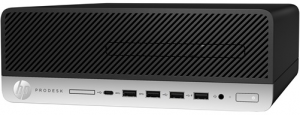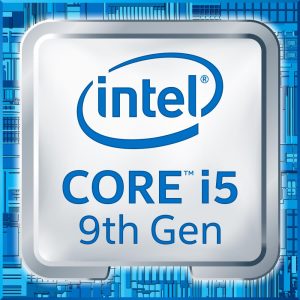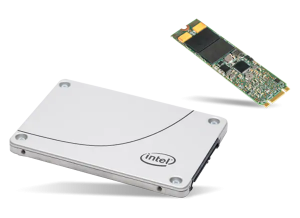12 Aug Computer Specs Explained
When you buy a computer, you’ll likely see a description which looks a little bit like algebra to some of us and consists of terms, words, numbers and acronyms. But what does it all mean??? Here’s computer specs explained using the details from one of our most commonly sold desktop computers:
The specs: “Desktop – HP ProDesk 600 G5 SFF. Intel Core i5-9500 Processor, 8GB Memory, 256GB SSD Storage, Intel UHD Graphics 630, 2x DisplayPort, Windows 10 Pro (64-bit), 3x3x3 Warranty.”
Explained
HP ProDesk 600 G5 – this is the make, model, series and generation of the computer. Much the same as Apple iPhones, for example: an iPhone 5C is much older than an iPhone 11 Pro Max; or Windows 10, being the latest Microsoft operating system, compared to the dated and unsupported Windows XP. Each vendor has their own style to this wording, but you’ll find most structured similarly.
SFF – this refers to the physical shape and size of the device, or the ‘form factor’. It’s where all the components live and, in this case, stands for ‘small form factor’. It’s the entirety of what we see as ‘the computer’ and the other type commonly seen is DM; ‘desktop mini’ – a model that commonly features a notebook processor instead, due to size and thermal limitations.


HP SFF vs DM form factors (sizes approximated).

Intel core i5-9500 Processor – the key term here is ‘Processor’, sometimes called a ‘CPU’ which stands for ‘central processing unit’. Processors typically come in a few major models, including i3, i5, i7 and now, i9 in the Intel range, and then the competing AMD Ryzen range. Generally, the higher the number the more complex computation the processor can do. CPUs are like the brain of a computer, they translate input into action and ensure that all the parts work together to operate properly. No matter what form a CPU is, it’ll also be categorised as a ‘generation’ and the example CPU is a 9th generation model. This usually helps to establish the age of a computer and the higher the number, the younger the CPU.
 8GB Memory – the smaller of the digital storage measurements shown usually refers to RAM, ‘random access memory’. In a simplistic way, it’s kind of like short term memory; the part of the brain that stores recently added information. If you ask someone their name, then that information is usually readily accessible for a period of time after they’ve told you, though you may forget after a while. Similarly, RAM stores current and recent activity, allowing it to be readily accessible for a period of time. For example, when writing an email, your computer needs to run Outlook, or another email application/web browser, and the characters you type are held on screen. At the same time, you may also have paused a video you’re watching, minimised a spreadsheet you’re working on, and be chatting to a friend or colleague in a messaging application. RAM allows you to complete all these short term tasks at the same time but doesn’t remember them long term. The data is not lost once you’re finished your tasks, it is stored in sent items of emails, within chat/web browser history, or as a file saved to your hard drive which brings us nicely onto the next topic…
8GB Memory – the smaller of the digital storage measurements shown usually refers to RAM, ‘random access memory’. In a simplistic way, it’s kind of like short term memory; the part of the brain that stores recently added information. If you ask someone their name, then that information is usually readily accessible for a period of time after they’ve told you, though you may forget after a while. Similarly, RAM stores current and recent activity, allowing it to be readily accessible for a period of time. For example, when writing an email, your computer needs to run Outlook, or another email application/web browser, and the characters you type are held on screen. At the same time, you may also have paused a video you’re watching, minimised a spreadsheet you’re working on, and be chatting to a friend or colleague in a messaging application. RAM allows you to complete all these short term tasks at the same time but doesn’t remember them long term. The data is not lost once you’re finished your tasks, it is stored in sent items of emails, within chat/web browser history, or as a file saved to your hard drive which brings us nicely onto the next topic…
 256GB SSD – the larger unit of measurement you see in the specs refers to the location of your computer’s equivalent to long term memory and is usually a HDD, hard disk drive, or an SSD, solid state drive. The HP ProDesk can store up to 256 gigabytes of data and has the capacity to hold two SSDs for additional storage if required. HDDs and SSDs store data in different ways, with the latter being the more contemporary method of data storage than the former. HDDs rely on spinning disks, or platters, to read and write data. Solid state drives use flash memory to deliver superior performance and durability. Because there are lots of small, moving parts inside a HDD, such as magnetic heads, spindles, and spinning platters, they are somewhat delicate and need to be treated with care. Without moving parts, SSDs are more durable, run cooler and use less energy. As such, they are also available in a variety of shapes and sizes to suit different use cases.
256GB SSD – the larger unit of measurement you see in the specs refers to the location of your computer’s equivalent to long term memory and is usually a HDD, hard disk drive, or an SSD, solid state drive. The HP ProDesk can store up to 256 gigabytes of data and has the capacity to hold two SSDs for additional storage if required. HDDs and SSDs store data in different ways, with the latter being the more contemporary method of data storage than the former. HDDs rely on spinning disks, or platters, to read and write data. Solid state drives use flash memory to deliver superior performance and durability. Because there are lots of small, moving parts inside a HDD, such as magnetic heads, spindles, and spinning platters, they are somewhat delicate and need to be treated with care. Without moving parts, SSDs are more durable, run cooler and use less energy. As such, they are also available in a variety of shapes and sizes to suit different use cases.
Intel UHD Graphics 630 – refers to the ‘GPU’ – graphics processing unit, which manages the display output like the CPU manages the workload. In this case, UHD is the range of the graphics processors, replacing the previous Intel HD models, and 630 is the generation of this specific integrated model. In some cases, discreet graphics cards can be added as an additional computing component to enhance the display of images that change at a high rate, such as for gaming and media use. Most computers are equipped with high standard integrated graphics such as this, which is sufficient for day to day use.
The rest is pretty self-explanatory; display ports tells you what ports the computer has and how many, indicating the kind of cables needed to connect your computer to external devices, such as a monitor. Next is the operating system, Windows 10 Pro, and “64 bit” refers to how the computer addresses data, in memory lengths of 64 bits at a time. Lastly, this computer comes with three years warranty – parts, labour and support, or “3x3x3”.
It might look like jargon but the descriptions of computing devices does translate to terms that are easier to understand than they may first appear. CW is always happy to help with any questions about the products we sell and aims to provide the right solution for you!
